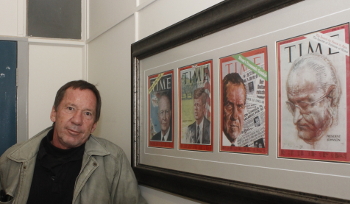Latest News Archive
Please select Category, Year, and then Month to display items
21 April 2021
|
Story Eugene Seegers
|
Photo Supplied
 Adelia Chauque graduated with distinction during the April Virtual Graduations hosted by the UFS.
Adelia Chauque graduated with distinction during the April Virtual Graduations hosted by the UFS.
On 20 April 2021, 693
South Campus students graduated during a
virtual ceremony, with 213 of them achieving distinctions. One of these is
Adelia Chauque, the newly elected South Campus SRC member for Policy and Transformation. During her journey as a student, Adelia says that she had numerous obstacles to overcome. For instance, she mentions that her “biggest challenge was completing my tasks with an unstable data connection during the pandemic”. Despite this impediment, Adelia managed to excel in her studies and obtained her qualification with distinction.
Adelia says her family was her biggest support system. “Due to the network problems that I faced my family had to drive me around until we found a stable connection that enabled me to write my tests.” Other support came from the university itself. “I received a lot of support from the academic adviser, Mr Chwaro Shuping,” she says. “Although he couldn't arrange for me to return to campus, he called regularly to ensure that I was still academically active.”
After overcoming these hurdles, Adelia is continuing her academic journey. “I am enthusiastic and eager to learn or to better myself. Due to that, I am furthering my studies by enrolling for a second degree programme in
Administration majoring in Industrial Psychology. I am very ambitious, in the sense that I strive for perfection and consistency with an organised and maintainable future, therefore being part of the SRC enables me to assist students and myself with a secured and comfortable learning environment to achieve our goals at the institution.”
Adelia balances her responsibilities in the SRC portfolio of Policy and Transformation on the South Campus by having a schedule planned that ensures she does not fall behind. She concludes, “During the morning, I attend my prescribed lectures to ensure that I will continue to slay academically. Then I am visible in the SRC office from 12:00 to 16:30. After hours, I contribute my time to study, but I remain available to students who prefer texting.” The university is keen to see the heights to which Adelia will attain in the coming years.
“I am enthusiastic and eager
to learn or to better myself.”
Adelia Chauque, South Campus SRC:
Policy and Transformation.
Photo manipulation in journalism: evil, crutch or lifebuoy?
2017-09-04

Albe Grobbelaar, veteran journalist and lecturer in the
Department of Communication Science at the UFS.
Photo: Rulanzen Martin
Since the 1800s the manipulation of photographs has been common practice, and who can forget the OJ Simpson Time magazine cover in 1994? Albe Grobbelaar, lecturer in the Department of Communication Science at the University of the Free State (UFS), asked in a special lecture on 18 August 2017 whether “Photo manipulation in Journalism” was an evil habit, a crutch or a lifebuoy.
“As a journalist I have always been interested in photography. And the principle of photo manipulation or tampering with photos, as we call it, is something that has interested me ever since,” Grobbelaar said. Photo manipulation is an area that has garnered many academic interest and is not a new trend but a practice that started in the 1830s when photos came into popular use. “It is not always done with ulterior motives, artists played with photographs to get unique effects.” Photo manipulation is not only to create fake news, but is sometimes used to convey novelty and create shock to news readers.
Different viewpoints for different circumstances
He talked about the spectrum of viewpoints on photo manipulation. Some conservative journalism schools say photos should never be retouched while other feel it is fine to tamper with pictures. “What I tried to convey in the lecture was that one should consider different circumstances differently,” Grobbelaar said. As a journalist he believes that news photos should never be manipulated.
He mentioned the example of the mugshot of OJ Simpson that the Los Angeles Police Department released to the media. “Newsweek and Time both used the photo on their front pages, but Time deliberately darkened the picture so that OJ, a black man, would appear more sinister,” Grobbelaar said. It is, however, common practice in the fashion industry to retouch images that are used in fashion magazines.
Use own judgment to validate photos
In the age of social media it has become easy to manipulate photos and which has been labelled fake news. “I would advise people to use their own judgment when validating the authenticity of photos,” Grobbelaar said. It is important to verify whether they are from a reliable news outlet.